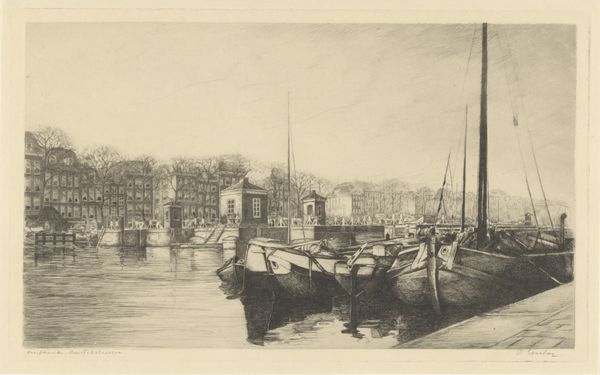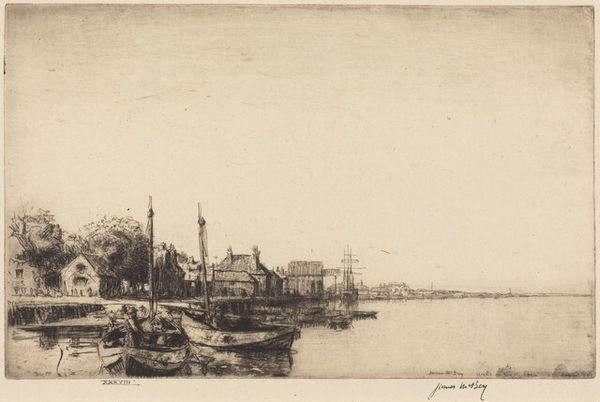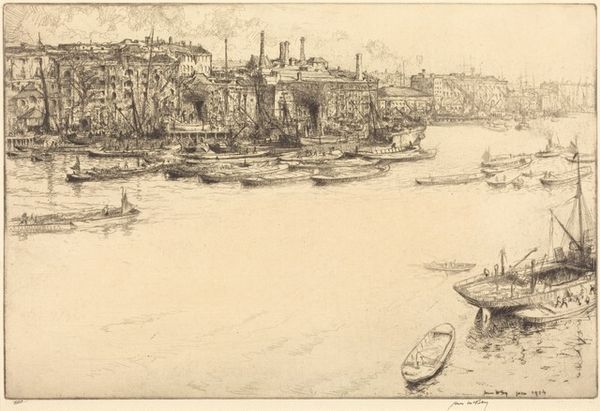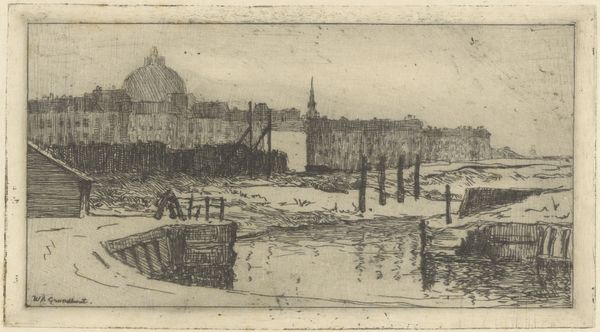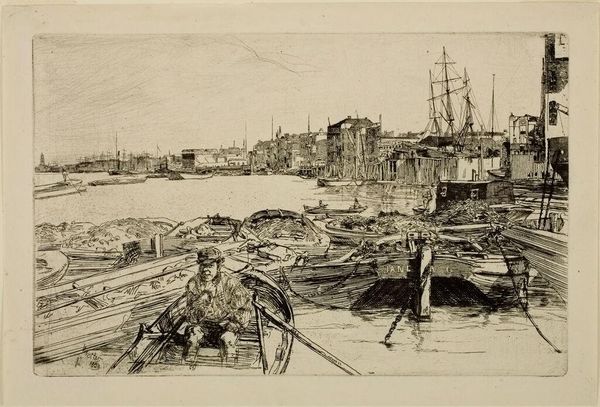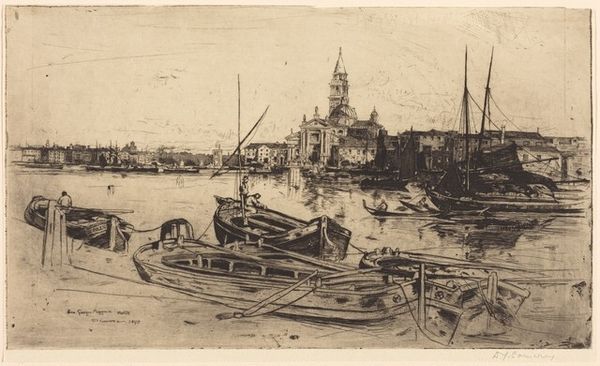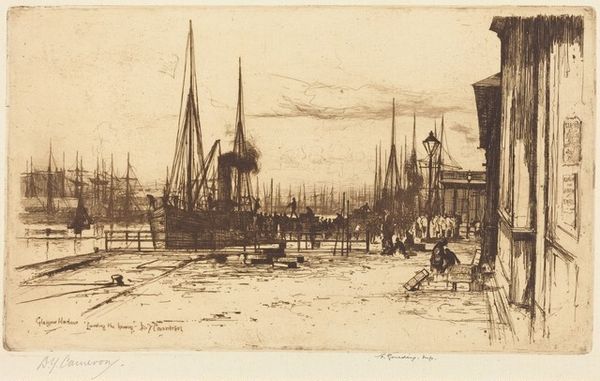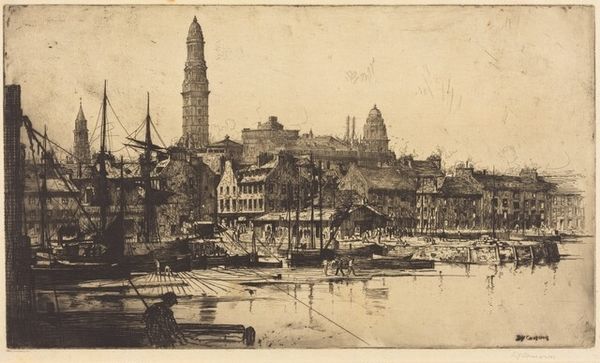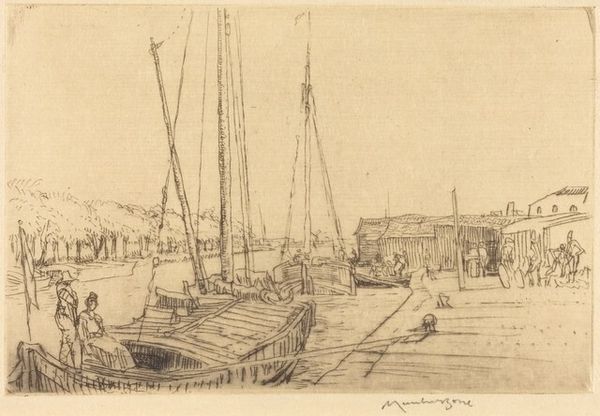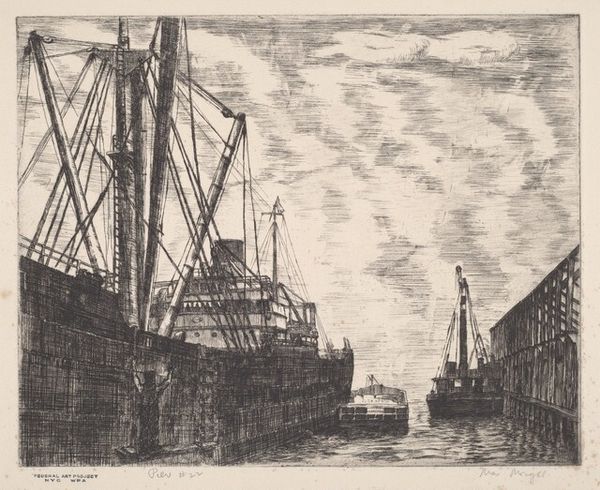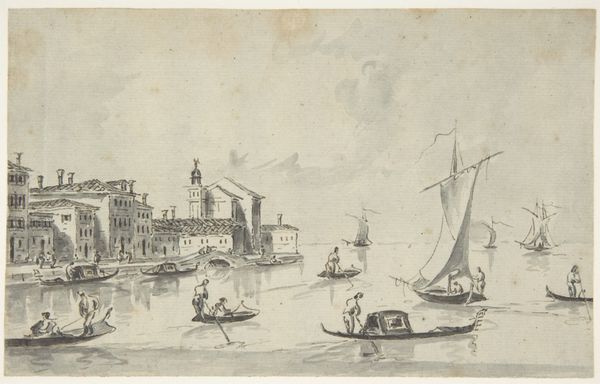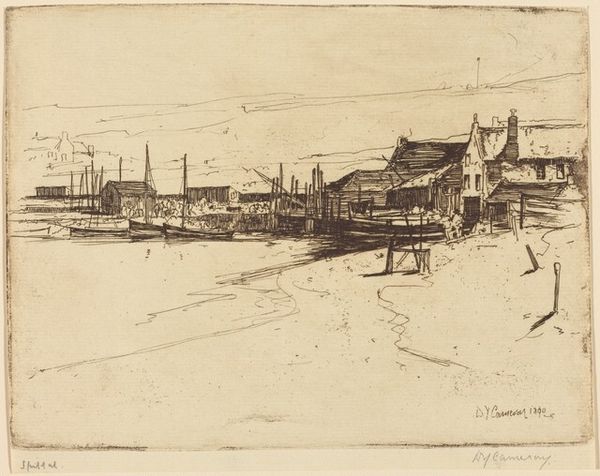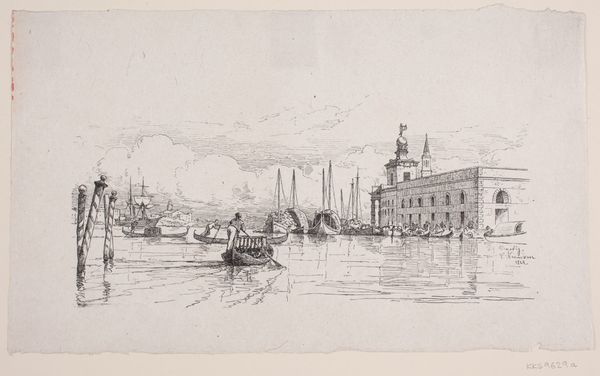
print, etching
# print
#
etching
#
landscape
#
glasgow-school
#
cityscape
#
realism
Copyright: National Gallery of Art: CC0 1.0
Editor: This is Muirhead Bone's "Glasgow: East End," an etching from 1911. It feels…stark, almost desolate, with all these angular lines depicting buildings and scaffolding. What kind of story do you think Bone is trying to tell us? Curator: That starkness speaks volumes. Bone created this during a period of intense industrial growth and, consequently, social upheaval in Glasgow. What do you notice about the viewpoint? It's not romanticizing the city; it's a very grounded, almost documentary perspective. Editor: Yes, it feels very real. I notice the scaffolding and the construction. There is definitely no romanticizing here. It makes you wonder who lived here at that time. Curator: Exactly. Who benefits from this rapid industrialization, and who pays the price? The figures, barely sketched, seem dwarfed by the architecture and infrastructure. It reflects a sense of alienation. Bone doesn't shy away from showing us the human cost, which isn't immediately evident but simmers beneath the surface. Look at how he contrasts light and shadow to heighten that tension. Does it remind you of any particular social theories? Editor: Maybe a bit of Marx and the concept of alienation in a capitalist society? Are you saying Bone was consciously making a political statement? Curator: Perhaps, perhaps not overtly. But artists, even when seemingly objective, are products of their time. By focusing on the structures rather than the individuals, he inadvertently critiques the system that prioritizes progress over people. What have you learned about Bone's possible intention? Editor: I had not considered it as any sort of social statement at all! It definitely does invite questions about class, progress, and how modernization can impact everyday lives, and encourages a deeper analysis of the urban landscape itself. Curator: And that's the power of art, isn't it? To provoke questions and encourage dialogue across time and context.
Comments
No comments
Be the first to comment and join the conversation on the ultimate creative platform.
